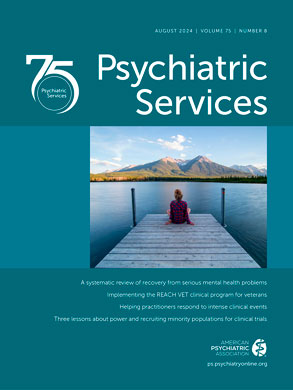In Reply: Dr. Menuck fires a salvo at the messengers; we address his four darts in order:
First, he takes issue with our statement that there is in fact "no evidence … that clinicians' unaided judgments are better than those of laypersons in assessing violence risk." Better-than-chance accuracy of clinical judgment does not contradict that. Predictions by psychiatrists and laypersons are indistinguishable in basis, substance, and reliability (
1). Forensic clinicians' predictions are no different from those of clinicians without forensic training and experience (
2). Because clinicians and laypersons alike base their predictions on history of violence, it is unsurprising that accuracies sometimes exceed chance. Dr. Menuck's assertion that clinicians predict violence with the same accuracy as actuarial tools is false. The references he cited do not support his contention, and the one by Gardner and associates demonstrated yet again the practically universal finding from hundreds of studies that actuarial methods are superior.
Second, our review explicitly concerned violence among psychiatric patients, forensic patients, and released prisoners. Among such populations, psychosis is unrelated or inversely related to subsequent violence (
3). Psychoses (or more accurately, some symptoms) might be related to violence in the general population, but that was clearly not our topic. The size of the relationship in the general population, if it exists, is small compared with, for example, the relationships for substance abuse and psychopathy. Menuck's comments about the nonapplicability to individuals of results derived from large samples and the unquantifiable nature of individual psychopathology illustrate but two of many well-documented errors to which human judgment is prone (
4,
5,
6).
Third, our point was that a few symptoms might be related to violence or treatment for them might help control it. Zisook and associates found two of 46 patients with violent command hallucinations (albeit toward themselves) committed lethal violence, leading us to suggest that command hallucinations might increase risk. Nowhere did we state that violent patients can be effectively managed with drugs. Allan and associates found that nadolol was unrelated to improvement in aggression, though related to other improvements, leading them to conclude, "Aggressiveness and psychosis can be orthogonal."
Fourth, consider, by analogy, the difference between a treatment target and a beneficial collateral effect for a fractured tibia. Proper treatment (splinting, immobilization with a cast, and so on) inevitably brings pain relief—a collateral benefit. However, treatment targeted only at pain relief obviously brings harm rather than benefit. Research indicates that in treating violent individuals, harm results from therapy aimed at raising self-esteem even though increased self-esteem might be a collateral benefit of appropriate treatment.
We appreciate that these scientific facts might be unwelcome news to practitioners who rely on unaided clinical assessment of dangerousness, drugs to treat psychotic symptoms (and thereby violence), and insight-oriented, emotionally based psychotherapy for violent offenders. Nevertheless, our positive message was that improvements in the prediction and management of violent recidivism among high-risk offenders can be attained when clinicians practice along the lines we suggested.

